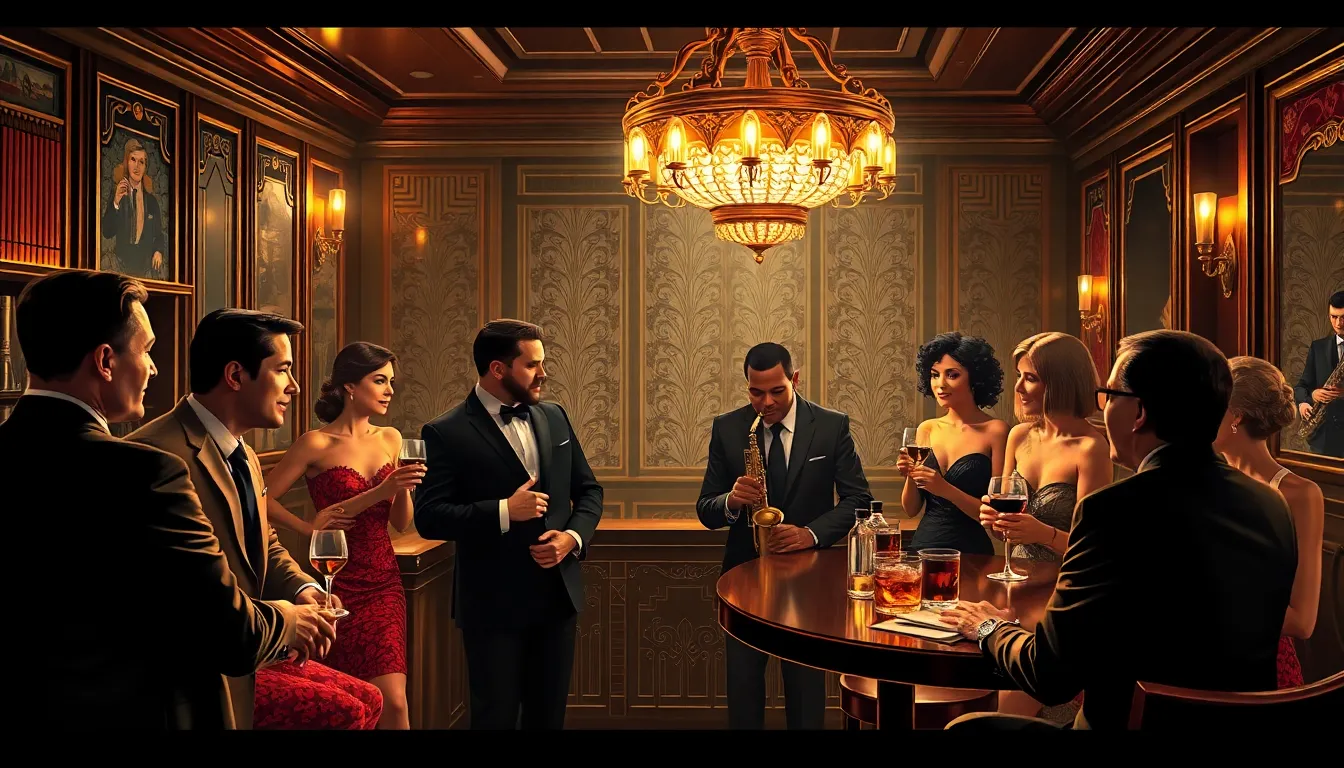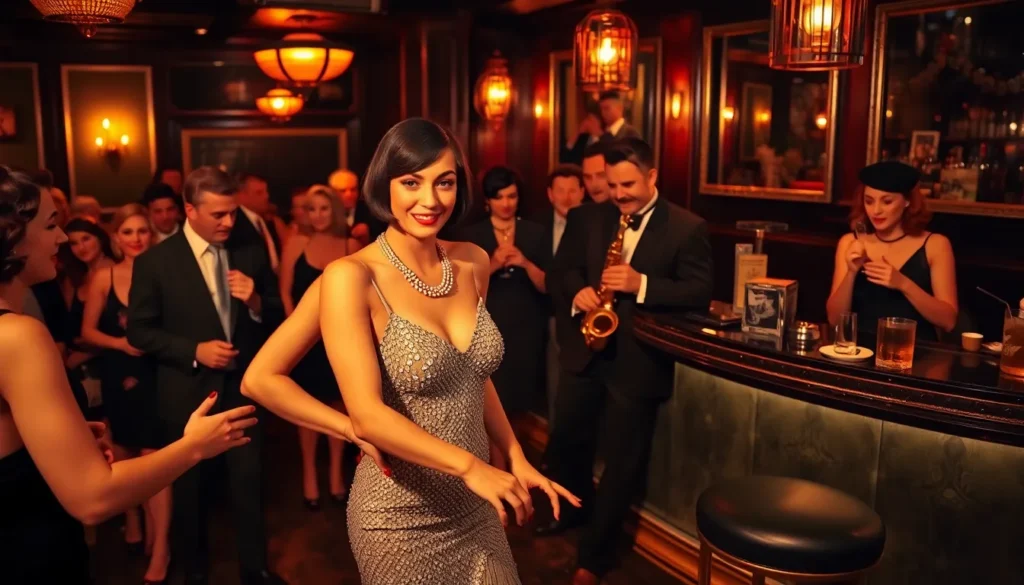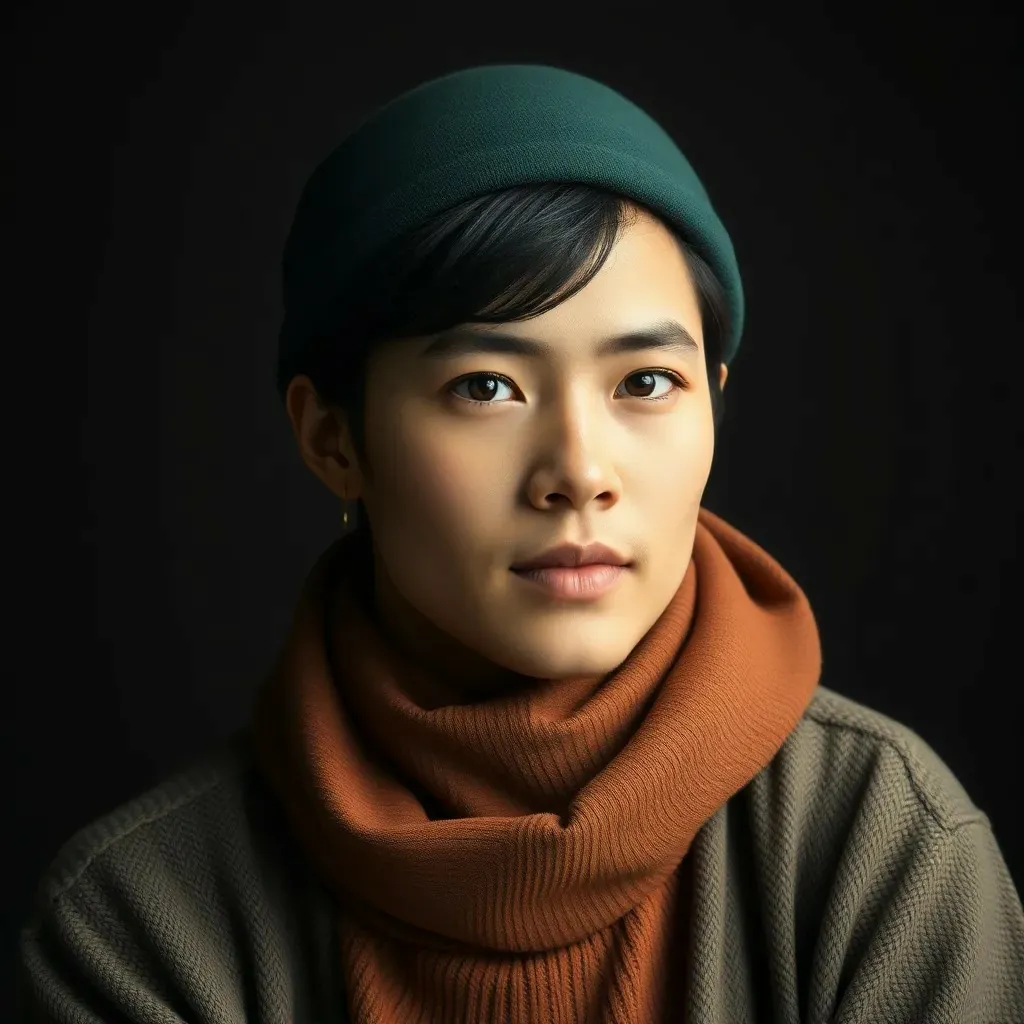Table of Contents
ToggleThe 1920s, affectionately dubbed the Roaring Twenties, was a decade that roared louder than a jazz band at its peak. It was a time of carefree living, flapper dresses, and a cultural revolution that transformed American society. Imagine a world where everyone danced the Charleston, listened to jazz, and read the latest novels by literary giants. Sounds fun, right? Join us as we jump into the colorful canvas of pop culture that defined this iconic era and discover how it still shapes our modern world.
The Roaring Twenties: An Overview

The Roaring Twenties were characterized by a sense of liberation, excitement, and change. Following the end of World War I, Americans found themselves embracing the joys of life. With economic prosperity at their fingertips, people began indulging in the latest fashions, innovations, and entertainment. This period saw a monumental cultural shift, moving from traditional values to a more modern lifestyle filled with new experiences. Think of it as America’s teen rebellion, but instead of sneaking out to see a late-night movie, they were dressing in the sharpest suits and reveling in jazz clubs.
Speakeasies flourished under Prohibition, where patrons gathered to sip cocktails and dance away their cares. It wasn’t just a time of partying: the 1920s marked a reaction against the strict moral codes of the Victorian era, ushering in an attitude of hedonism and embrace of the new. As the decade progressed, it became clear that this was not just a phase but a defining moment in American pop culture.
Key Cultural Movements
Jazz and the Birth of a New Sound
The 1920s are often synonymous with jazz, a genre that sprang from African American musical traditions and exploded into mainstream culture. Musicians like Louis Armstrong and Duke Ellington became household names, bringing rhythms and sounds that were previously considered avant-garde into the homes of millions. Jazz wasn’t just music: it was a movement, a lifestyle, and an expression of freedom. Clubs filled with lively music saw people of all races dancing together, challenging the social norms of the time.
The Rise of the Flapper
Flappers epitomized the changing roles of women during the 1920s. With their bobbed hair and bold fashion choices, they rejected the social constraints that had long governed femininity. Instead of corsets, they donned loose dresses, embraced makeup, and danced the night away. This era heralded women’s suffrage and sparked a cultural revolution where women began to assert their independence. Flappers symbolized a new breed of woman, confident, carefree, and fiercely modern.
Cinema and the Golden Age of Hollywood
Influential Figures and Iconic Stars
The 1920s marked the dawn of Hollywood as a cultural powerhouse. The invention of sound in films revolutionized the industry: silent films were replaced with talkies, leading to a surge in movie attendance. Stars like Charlie Chaplin and Greta Garbo became legends, captivating audiences far and wide. The glitz and glamour of red-carpet events became the norm, elevating the status of actors and actresses to that of royalty.
This golden age set the stage for blockbuster films and introduced iconic characters that still resonate today. The silver screen not only entertained audiences but also provided a platform for societal change, shining a light on social issues and the American Dream.
The Impact of Literature and Art
The Harlem Renaissance
The Harlem Renaissance was a cultural, social, and artistic explosion that took place in Harlem, New York, during the 1920s. African American artists, writers, and musicians celebrated their cultural identity, challenging racial stereotypes and racism through their work. Figures like Langston Hughes and Zora Neale Hurston emerged as literary giants, voicing the struggles and joys of black life in America. This cultural renaissance laid the groundwork for future civil rights movements, and its influence continues to be felt in literature and art today.
Modernism in Literature and Art
Modernism also thrived in the 1920s as artists and writers sought to break free from traditional constraints. They experimented with form, narrative style, and themes. The works of F. Scott Fitzgerald and Ernest Hemingway reflected the disillusionment of the post-war generation, while painters like Georgia O’Keeffe brought new perspectives on American landscapes and identity. This collision of styles and ideas birthed a dynamic era of creativity that forever altered American art and literature.
Sports and Celebrity Culture
The 1920s also saw the rise of sports as entertainment. Icons like Babe Ruth and Jack Dempsey captured the public’s imagination, turning into mega-stars whose fame rivaled that of Hollywood’s elite. Sporting events became major social gatherings, with crowds flocking to stadiums to witness feats of athleticism. The phenomenon of fandom began to take shape, and sports figures began to endorse products, paving the way for modern celebrity culture. It was the start of fans cheering not just for teams, but for individuals who had become cultural icons allowing sports to cross into the realms of pop culture.
The Influence of Radio and Print Media
As the decade progressed, radio and print media emerged as significant forces in shaping public opinion and culture. With households tuning into live broadcasts, the advent of radio entertainment brought news, music, and theater into living rooms. Icons like Bing Crosby and radio dramas captivated listeners, fostering a shared national culture. Print media, including magazines like Vanity Fair and The New Yorker, popularized trends and set the standards for fashion and lifestyle, influencing how people perceived themselves and the world around them. Together, these mediums created a sense of unity and connectivity across the nation that resonated far beyond the decade.
The Legacy of 1920s Pop Culture
The impact of 1920s pop culture is undeniable. From the explosion of jazz music to the flood of iconic films, art movements, and evolving gender roles, the legacy of this vibrant decade is woven deeply into the fabric of American society. The breakthroughs made in literature and the art world laid the groundwork for future generations. Even today, echoes of the Roaring Twenties can be observed in contemporary music, fashion, and film. The dynamics of these cultural shifts continue to resonate, showcasing how a decade can usher in profound and lasting change.




